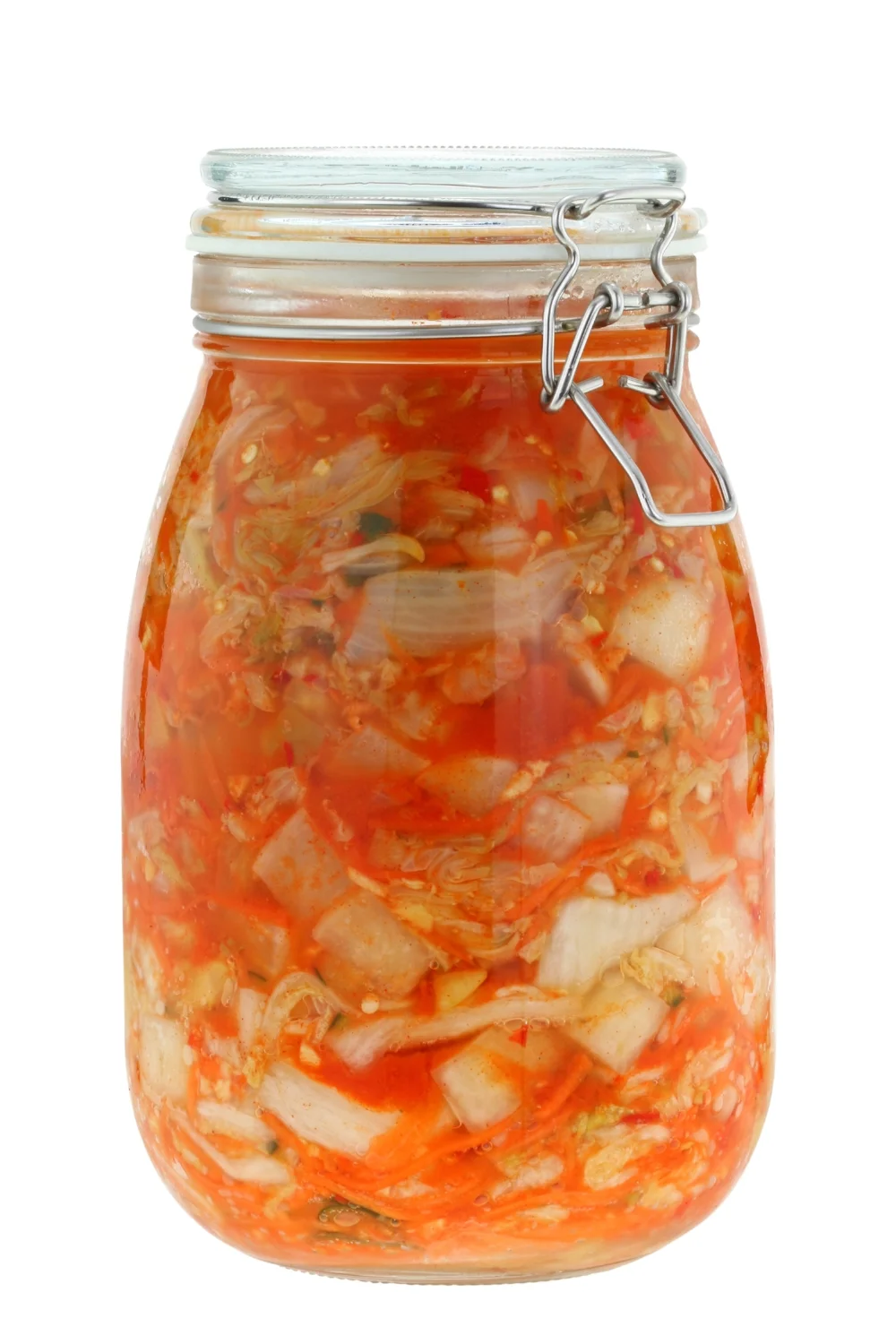Kraut with Broccoli & Cauliflower
This post contains affiliate links to products that I use myself or can recommend. My affiliate policy.
A healthy gut is key to a healthy body and mind.
Today I was fermenting cruciferous vegetables (cauliflower, broccoli) and cabbage.
Cruciferous vegetables provide cancer-protecting effects and healthy estrogen metabolism for hormone balance.
This dish is a superfood when it comes to the gut. Fermented veggies, especially cabbage, are easier to digest than raw or cooked, plus the probiotics and the lactic acid improve intestinal health.
MORE: Why The Secret To Your Health and Happiness Is In Your Micobiome
Recipe
Props:
Large mixing bowl
Sharp knife
Disposable plastic gloves
Ingredients:
450 g cabbage
650 g cauliflower
125 g onions
450 g broccoli
1 chili
33 g salt
Instructions:
Wash and process the vegetables. Be sure to rinse the skins of each vegetable thoroughly.
Remove one or two of the outer leaves of the cabbage and put it aside.
Slice the cabbage into halves
Remove the core (it’s got some sugar in it that you don’t want), then chop into 1 cm wide strips.
Chop the cauliflower - also remove its core.
Chop the broccoli.
Peel and dice onions.
Slice the top off the chilli, remove the seeds with a knife or your thumb (I really recommend wearing disposable gloves, because chillis stings on your skin). Keep the chilli skin-side down and slice and dice.
Weigh all the ingredients except the outer cabbage leaves, and place them in a large mixing bowl.
Massage the veggies with clean hands (or wear disposable gloves) to release their juices– about 5-10 minutes.
Transfer the mixture to your preserving jar, pressing down as you pack the jar so that more brine juices are released. Fill the jar up.
Smash it down; make sure the kraut is below the brine, that so it goes anaerobic, which means that there is no oxygen in the solution. The bacteria you try to cultivate are anaerobic, and oxygen can cause all kinds of problems like mold and yeast.
Fold the leaves you set aside in the beginning and place them on top of your kraut using them to press the veggies under the brine.
Seal the jar and place out of direct light.
Allow to ferment for 21-28 days at room temperature. Warmer temperatures will speed up the process, cooler will slow it down.
The lid must be opened every day to allow the jar to “burp” (release built-up gases).
Taste your kraut after 21 days. You want it to taste sauer. Have a little patience with it. I find the kraut to be best after about 3-4 weeks time for flavor and texture.
When you're happy with taste and texture, transfer your kraut to a cooler temperature. Place it in the cellar or in your refrigerator. This will slow down the fermentation process, allowing you to keep it for several months.
Use:
Have your fermented veggies with your lunch or dinner. It pairs well with almost everything. Use it as a condiment and instead of salt.
Serve with meat, eggs, fish dishes or with rice or other vegetables.
General thoughts on fermentation:
Start slow. If you are new to fermented foods, start with very small portions and proceed slowly.
The ideal temperature for lacto-fermentation of fruit and vegetables is 22 degrees.
Taste your ferment every day. There's no special moment at which a ferment is "ready" - it's all a matter of taste. After just a day or two, the ferment will develop a tang. Keep tasting it every day until it reaches the level of tartness you want.
A good sign that your vegetables will be ready is when you open the jar and there is a sour (think vinegar-y) flavour, and bubbles start to travel up the inside of the glass when tapped or moved. At this point, transfer to the fridge, where they will continue fermenting, but at a much slower pace.
Mold. If some vegetables emerge at the top of the liquid, they may develop a layer of mold. Simply scrape this off and make sure the remaining vegetables are weighted under the liquid. The mold is harmless and will not ruin the ferment.















